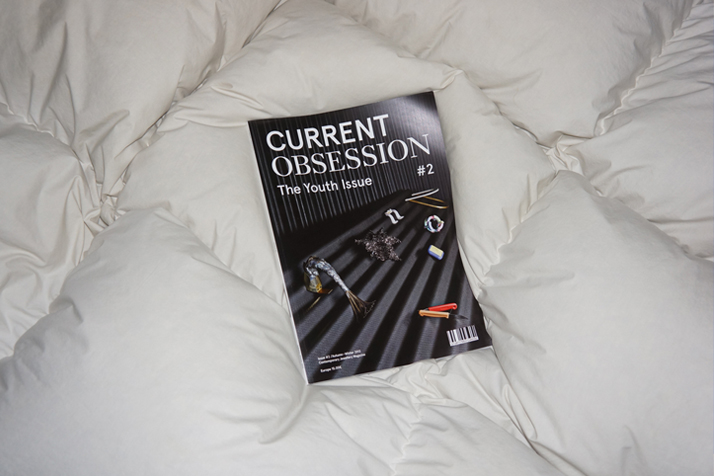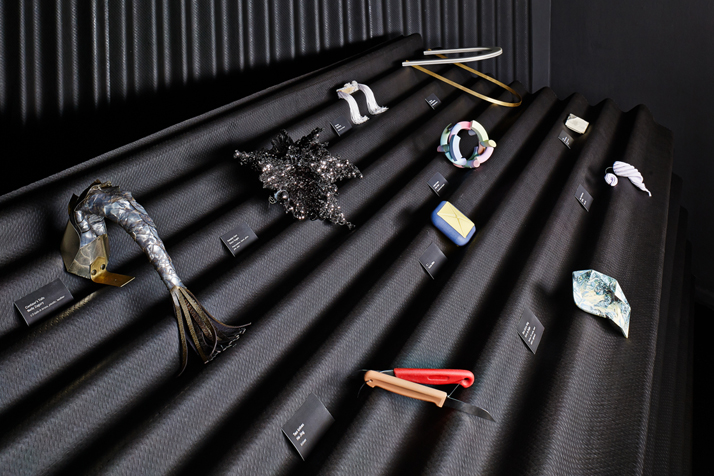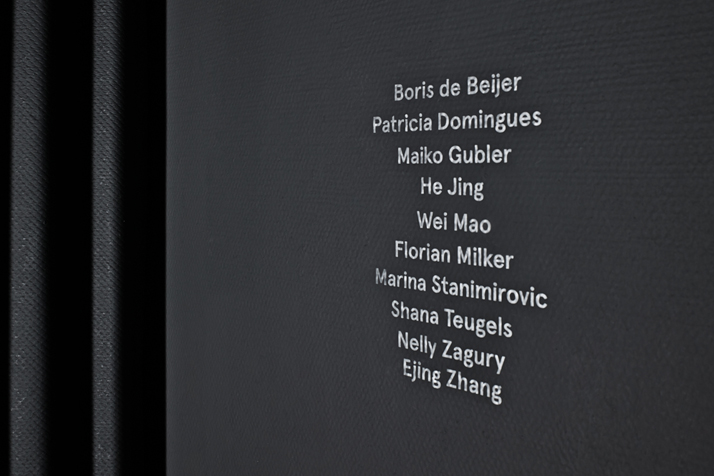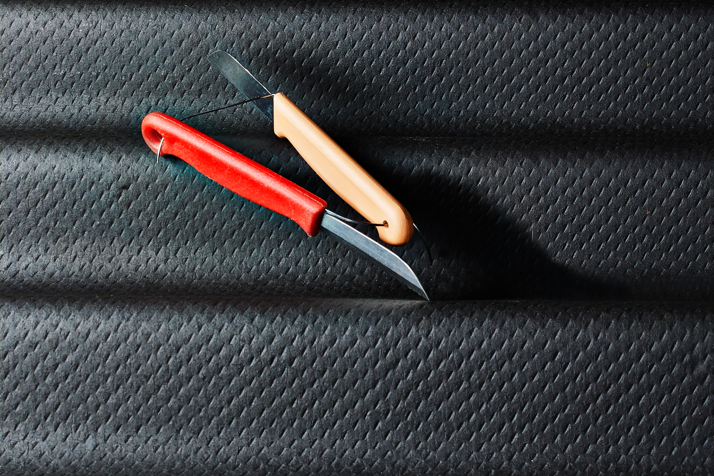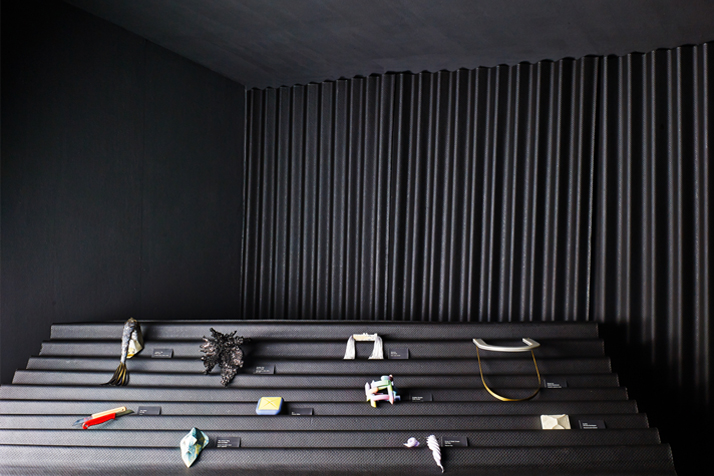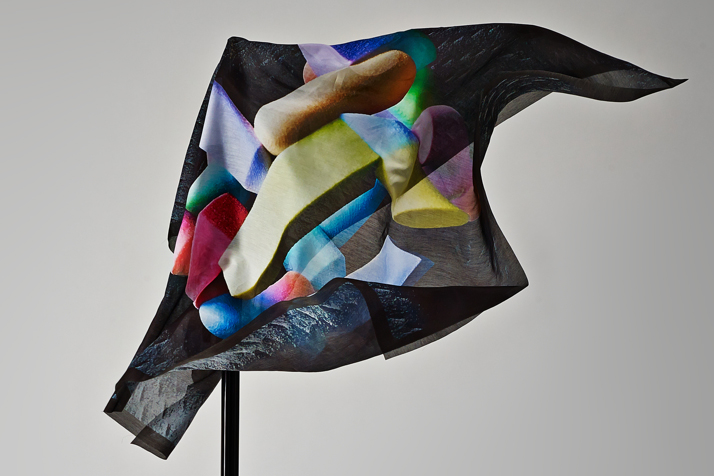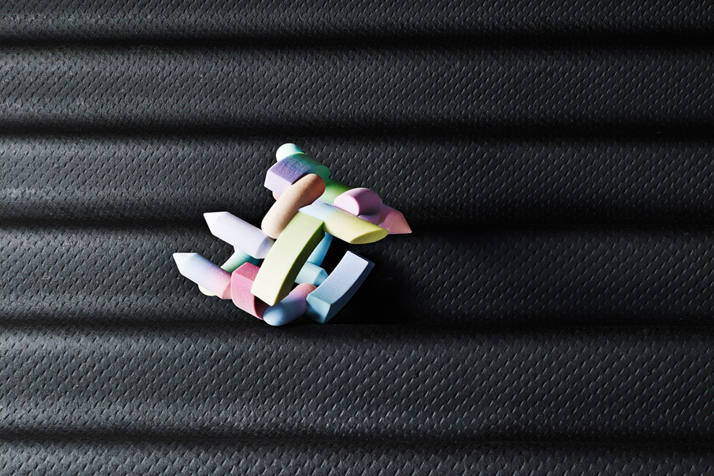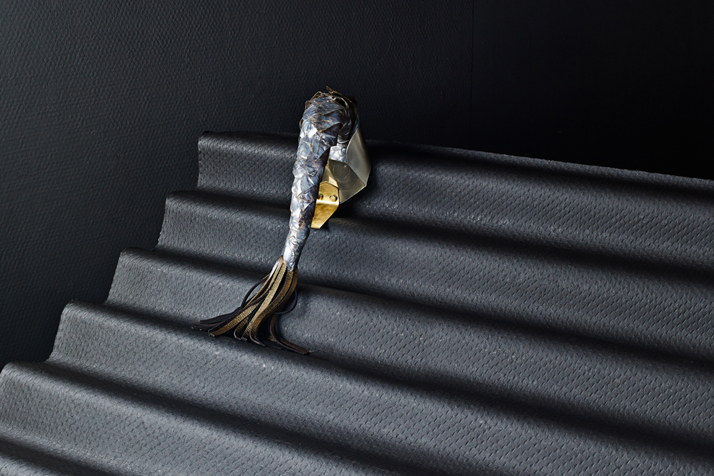Exhibition As Editorial
2013
Issue #2
Current Obsession Magazine
Curated by Matylda Krzykowski
Photography Christoph Sagel
Scenography by Matylda Krzykowski and Christoph Sagel
First image by Matylda Krzykowski
The Exhibition That Never Happened is an exhibition you can hold in your hands. It is a two-dimensional representation of itself printed on paper. A two-dimensional show is an exhibition that a magazine can offer. The number of printed copies equals the number of invited guests, but they do not need to stand around in a crowded space, distracted by the buzz of the opening. Each gets an individual visual sensation and experience.
I am an exhibition maker. Current Obsession asked me to work with them because I can, to quote the editors ‘create images’. My view on jewellery comes from a product and object-related context. Through my blog Matandme I have been in touch with a fair amount of designers, many of which I’ve worked with and sourced for their ways of relating to design. This eventually lead me to co-founding Depot Basel, place for contemporary design, where I have curated numerous exhibitions.
For The Exhibition That Never Happened we’ve selected jewellery by designers focusing on the potential of each individual object. As curator I was aiming to find one piece that holds the attitude of each jeweller’s general work – a reference piece. The result is an overview of new, sometimes undiscovered work, for which the context hasn’t been fully defined.
The obsolete notion that jewellery is handmade in silver or gold and that the more you wear it, the more it defines you, has shifted towards wearable objects or small-sized sculptures that exist on their own. This certainly caught my attention.
The Exhibition That Never Happened is set in a black room, a darkroom with extreme light, allowing each colourful piece to shine. It is a presentation of formality – aiming to introduce the selection in full control. Christoph Sagel, still-life photographer from Berlin, a master of lighting, with whom I’ve been working since 2012, is the right person to give the pieces a dramatic editorial stage, where jewellery comes across as desirable two-dimensional objects.
Florian Milker – Digital Precision
GOLDSMITH, JEWELLERY DESIGNER
Kunsthochschule Burg Giebichenstein, Halle Saale, DE, 2015
Florian did an apprenticeship as a Goldsmith – a classic playground with its limitations. Soon he turned to 3D programs. The B_Serie is made by laser sinter process. “I like the gentle surface, the low weight possibility and the precision of the technique.” Florian will graduate in 2015.
Shana Teugels – Shaped Kitsch
JEWELLERY DESIGNER
St. Lucas University College of Art & Design, BE, 2010
Shana uses polypropylene, resin, plastic beads, and glitter glue – a combination of cheap materials that came from an intense research on kitsch and resulted in experiments of endless shaping options.
Nelly Zagury – 2D To 3D Fantasy
HANDS-ON ART DIRECTOR
Ecole Supérieure des Arts Décoratifs of Strasbourg, FR, 2011
Nelly creates a mythological world, where jewellery is a relic of her fantasy, a hybrid object, which looks like a whip or a penis. She creates ornamental objects playing with symbolism of adornment.
Ejing Zhang – Tradition Encounters Interaction
TEXTILE DESIGNER
MA Royal College of Art, UK, 2013
Ejing made an abacus out of essential materials and tools – bobbins and paintbrushes.
Abacus was the calculating method taught everywhere in China when she was little. The thread winding, the plastic, and the wood all came from that abacus. She is interested in jewellery as something interacting with the body and not having limitations of being soft fabric.
Patricia Domingues – Reconstructed Material
JEWELLERY DESIGNER
MA Hochschule Trier, Fachrichtung Edelstein und Schmuck, Idar-Oberstein, DE, 2013
Reconstructed material is a massive block, without anything, any line, any detail, and any imperfection. It does not matter the angle you cut, it will always be the same. Whatever you make will only add something to this naked block.
He Jing – Readymade Liaison
JEWELLERY DESIGNER
Jewellery department at Gerrit Rietveld Academie, NL, 2013
Jing appreciates normal-looking, mass-produced things, because they are simple, durable, and functional. They are full of hints in details. She imagines the reasons why people made them and how people treat them. When she makes the work with ready-mades, she is ‘collaborating’ with them.
Wei Mao – Right Material
JEWELLERY DESIGNER
BA fashion Jewellery at London College of Fashion, UK, 2013
The work is based on dessert-making and cream-piping. Wei researched the material that is soft and fluid enough to go through a piping nozzle, while not being too soft or too fluid to keep the shape. She tried plaster, jesmonite, resin, silicone and etc., eventually found polymer clay material. It is also pure white, which makes it easy to get any colour palette.
Maiko Gubler – Experiments Within Hybrid Spaces
ART DIRECTOR/IMAGE-MAKER
Visual Communication at The Berlin University of the Arts, DE, 2000
Maiko is interested in printing technology and 3D modelling. She experiments within hybrid spaces and explores the intrinsic qualities of three-dimensional computer-aided imagery and objects. ”The intersection where things are lacking definition and have a sense of unease is what I’m interested in. I’d like to invite people to think about the obsolete real/digital distinctions differently and to expand their notion of spatiality and things.”
Boris de Beijer– Artefacts From The Far Future
DESIGNER & DJ
Jewellery department at Gerrit Rietveld Academie, NL, 2011
Boris deals with historic context of jewellery, rather than it’s contemporary relevance. “Jewellery pieces are not even meant to be worn by humans”. Invents his own material by combining and excessively experimenting with existing raw materials and found objects – mixture of different resins at the base for each piece. Due to its unpredictable and aggressive behaviour, the outcome of the raw bloc is always a surprise, always unique and therefore it is impossible to duplicate a piece. “It’s a lot like alchemy.”
Marina Stanimirovic – Juxtaposition Of Sculpture Or Design Object
JEWELLERY DESIGNER
Goldsmithing, Silversmithing, Metalwork & Jewellery department at Royal College of Art, UK, 2013
“Because even if you can’t wear it to go to work or go buy some food, the fact that it has been designed for the body, makes the piece the most intimate sculpture or design object.” Marina used Corian®, resin mixed with powder of stone, because when you touch it, it is a really cold and heavy material, but also really soft to carve: two antithetic notions.
Text featured in the magazine and on Matandme.
